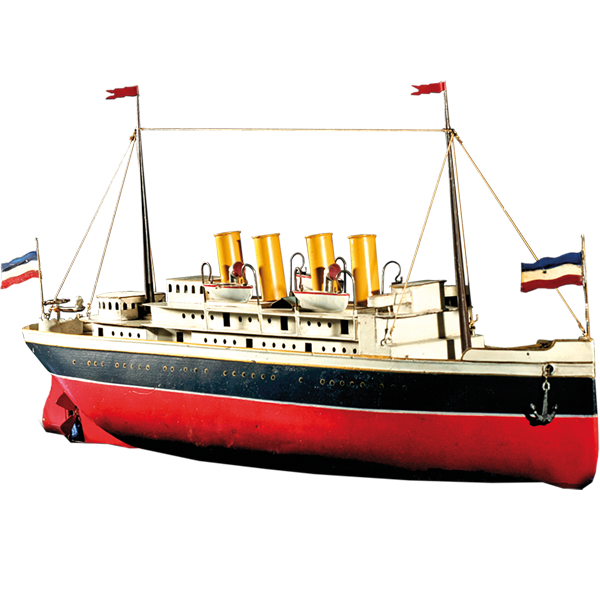
- DE
- EN
- FR


Around the turn of the century, German shipyards had a lot to do. It was not only the Imperial Navy that created demand. Ships were increasingly used not only for transport and military purposes, but also for pleasure: Although the cruise industry was still in its infancy, it rapidly picked up speed.
From around the 1840s, the first cruises took place. In 1900, the first ship built specifically as a cruise ship was completed: The Princess Victoria Luise of the HAPAG shipping company.
The Imperial Navy had long been on its way to its peak at this time. From 1900 onwards, it was considered one of the largest and most modern battle fleets in the world. Nevertheless, it remained largely ineffective due to the geopolitical location of the German coast and the fact that there were no overseas bases.
Nevertheless, the models of the "New Battleships" became more and more important. As early as 1898, Bing offered elaborate and detailed steamships. They had been built according to original drawings from the imperial shipyard in Kiel. But it was not only large warships that came into fashion. Bing's "Ships with Steam and Clockwork" department also built pinnaces, river steamers, ocean liners, model submarines, automatic-firing gunboats and torpedo boats.
From 1920, children and parents could also enjoy the new ocean liners, ferries, tugs, fireboats and rowing boats.
The models were wound by clockwork or powered by a steam engine. They were fully functional and could therefore also float. Similar to their larger counterparts, however, they also suffered shipwreck from time to time and sank in the local pond.
The Bing seaplane exhibited here was also intended for use in the water. Although it couldn't fly, it was clockwork and propeller-driven and could float.
In general, Bing produced very few model aircraft. There was, however, a spectacular "compressed aeroplane" called Autoplan, which could actually fly several 100 metres. Unfortunately, there are very few surviving examples.